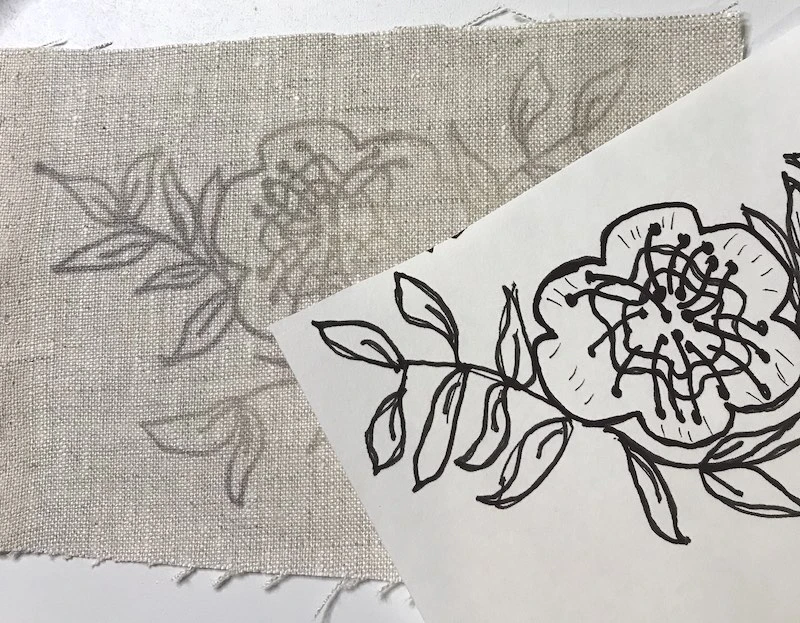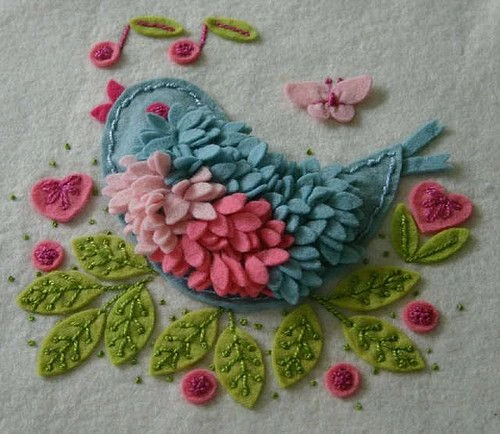
Pattern transfer is the process of transferring a design onto fabric so you can stitch it accurately. This step is vital because any errors made during transfer will be reflected in the final embroidery. Whether you’re a seasoned embroiderer or a beginner, mastering this skill will help you produce professional-looking results.
To transfer your embroidery pattern effectively, you'll need a few essential tools and materials:
Tracing Paper: Best for sketching designs and transferring them using methods like pencil tracing.
Transfer Paper: Comes in various colors and is used for transferring patterns directly onto fabric. It is especially useful for light fabrics.
Fabric Markers: These come in different colors and are great for marking designs directly onto your fabric.
Chalk: Suitable for fabrics like denim and felt, as it allows you to draw your pattern without leaving permanent marks.
Accurate and clear pattern transfer is ensured when you use the appropriate tools for your type of fabric.

Transferring an embroidery pattern to fabric is a simple process. Here’s a step-by-step guide to how to transfer embroidery pattern to fabric.
To transfer an embroidery pattern to fabric, you’ll need to follow these steps:
First, prepare your fabric by ensuring it’s clean and ironed to remove any wrinkles. Place the transfer paper on the fabric with the colored side facing down, then position your embroidery pattern on top of it.
Using a pencil or stylus, trace over the design, being careful to apply enough pressure so that the pattern transfers to the fabric. When completed, gently remove the pattern and transfer the paper to show the fabric's design.

When it comes to transferring your embroidery pattern effectively, having the right tools and materials is essential. For instance, tracing paper is ideal for sketching designs that you can later transfer using pencil tracing methods.
Transferring patterns to dark fabrics can be challenging, but with the right tools, it's manageable. For instance, light-colored chalk works well on dark fabrics, providing good visibility and being easy to remove afterward.
Alternatively, fabric markers that contrast with your fabric color can ensure that your pattern is visible. It's always a good idea to test the marker or chalk on a scrap piece of fabric before starting your project to ensure that the marks are both visible and easily removable.

Felt, with its unique texture, requires specific techniques. Using a fine-tip marker can help make precise lines on this textured surface. Chalk is another good option, providing a temporary solution that’s easy to remove.
Before transferring your pattern, make sure the felt is smooth and free from dust or debris. This will help in achieving clear and accurate transfers, which are crucial for working with this material.

Denim requires a slightly different approach due to its thickness and rugged texture. Using a heavy-duty transfer paper designed to handle thicker fabrics can make the process easier.
Additionally, tailor’s chalk is ideal for marking designs on denim, as it provides good visibility and can be easily removed. To prevent the ink from bleeding through the layers of denim, place a piece of cardboard between the fabric layers while transferring the pattern.
The black fabric has challenges of its own:
Use White or Light-Colored Markers: These provide contrast and are visible against the dark background.
Light Boxes: These can help in seeing the pattern clearly while tracing.
Consider using a white chalk pencil or fabric paint for a clearer design transfer.
How do you transfer embroidery Patterns onto dark fabric without transfer paper?
If you’re out of transfer paper, there are alternatives you can use. For instance, lightly sketching the pattern directly onto the fabric with a pencil or fabric marker can be a simple solution. Another option is using a sewing machine to stitch the pattern as a guide lightly.
These DIY solutions should be tested first to ensure they allow for easy removal or correction of mistakes. This will help you avoid unwanted marks or lines on your final piece.
Time and stress can be saved by avoiding common mistakes:
Using Incorrect Tools: Ensure that you’re using tools suited for your fabric type.
Misalignment: Make sure your design fits correctly on the fabric by checking it again.
Test your tools on a sample fabric before working on your final piece.
Keep your workspace clean to avoid smudging.
Accurately transferring your embroidery pattern to fabric is crucial for achieving beautiful, precise embroidery. By following these steps and tips, you can ensure that your designs are transferred clearly and effectively. If you need additional help or want to explore custom embroidery digitizing, True Digitizing is here to provide expert support and high-quality solutions.
Nick William has been immersed in the world of embroidery digitizing for over 20 years, earning 25 industry awards throughout his career. As a 3rd generation embroidery expert, Nick’s journey started in his family’s workshop, where he learned the art of digitizing before the rise of modern software. He has worked with leading commercial embroidery businesses and has shared his expertise with over 75,000 home and professional embroiderers. As an author at True Digitizing, Nick is passionate about teaching others how to create beautiful, precise designs through easy-to-follow tutorials and expert advice.
Categories

Understanding Popular Machine Embroidery File Formats
23-04-2025

Is SVG A Vector File? Here’s the Shocking Truth Everyone Should Know
17-04-2025

6 Popular Types of Vector Files 2025
16-04-2025

How To Create A Vector File: Step-by-Step Guide
15-04-2025

What Is A Vector File? Everything You Need To Know
14-04-2025

Best Janome Embroidery Machines You Need to Check Out in 2025
11-04-2025

Custom Embroidery Digitized Designs For Hoodie Lovers
10-04-2025

Best Embroidery Patches For Your Clothes
10-04-2025

Professional Online Photo Digitizing Services Provided by True Digitizing
09-04-2025

Best Babylock Embroidery Machines For You
09-04-2025